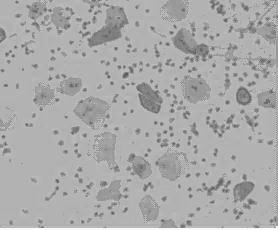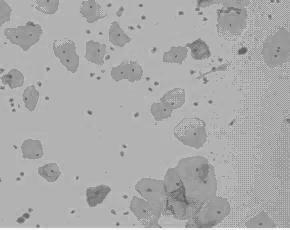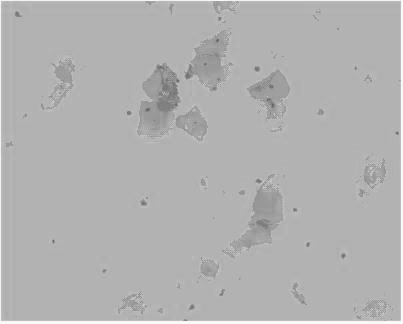Novel cervical exfoliated cell separation method
A technique for exfoliated cells and cervix, applied in the field of cervical exfoliated cell separation, can solve the problems affecting the detection rate of abnormal cells, small cells, large nuclei, etc., and achieve the effect of high practical application value, far-reaching clinical value and broad market prospect.
- Summary
- Abstract
- Description
- Claims
- Application Information
AI Technical Summary
Problems solved by technology
Method used
Image
Examples
Embodiment Construction
[0027] The method for separating cervical exfoliated cells in the present embodiment operates as follows:
[0028] 1. Use a special brush for cervical exfoliated cells, gently press the brush head on the cervix, and rotate 2-3 times in the same direction to brush the cervical exfoliated cells, and place the brush in 5ml of PBS phosphoric acid with a concentration of 10% by volume Buffer, vortex and mix to obtain cell suspension;
[0029] 2. Add the cell suspension obtained in step 1 into 3ml of mucus separation solution along the tube wall; after centrifugation and discarding the supernatant, add 3ml of PBS phosphate buffer solution with a volume percentage concentration of 10% to the centrifuged sediment. Resuspend the precipitate to obtain a resuspended cell suspension;
[0030] 3. Add the resuspended cell suspension obtained in step 2 into 3ml of neutrophil separation medium Ficoll along the tube wall, centrifuge, discard the supernatant, and the precipitate after centrifu...
PUM
 Login to View More
Login to View More Abstract
Description
Claims
Application Information
 Login to View More
Login to View More - R&D
- Intellectual Property
- Life Sciences
- Materials
- Tech Scout
- Unparalleled Data Quality
- Higher Quality Content
- 60% Fewer Hallucinations
Browse by: Latest US Patents, China's latest patents, Technical Efficacy Thesaurus, Application Domain, Technology Topic, Popular Technical Reports.
© 2025 PatSnap. All rights reserved.Legal|Privacy policy|Modern Slavery Act Transparency Statement|Sitemap|About US| Contact US: help@patsnap.com



